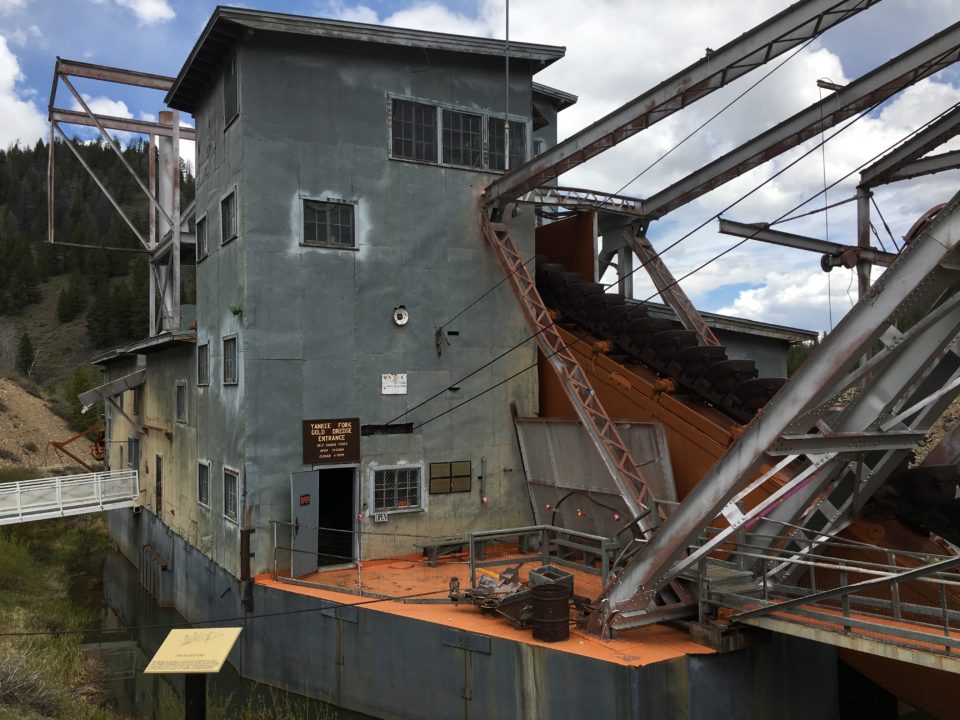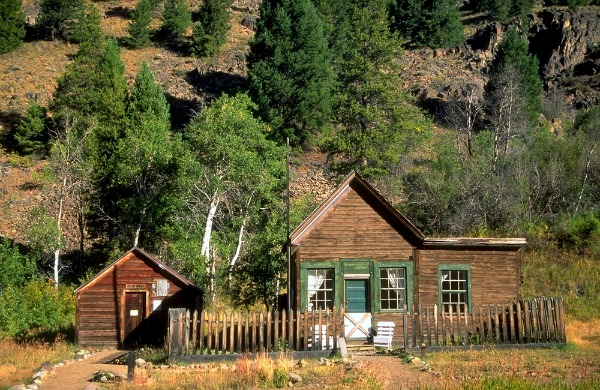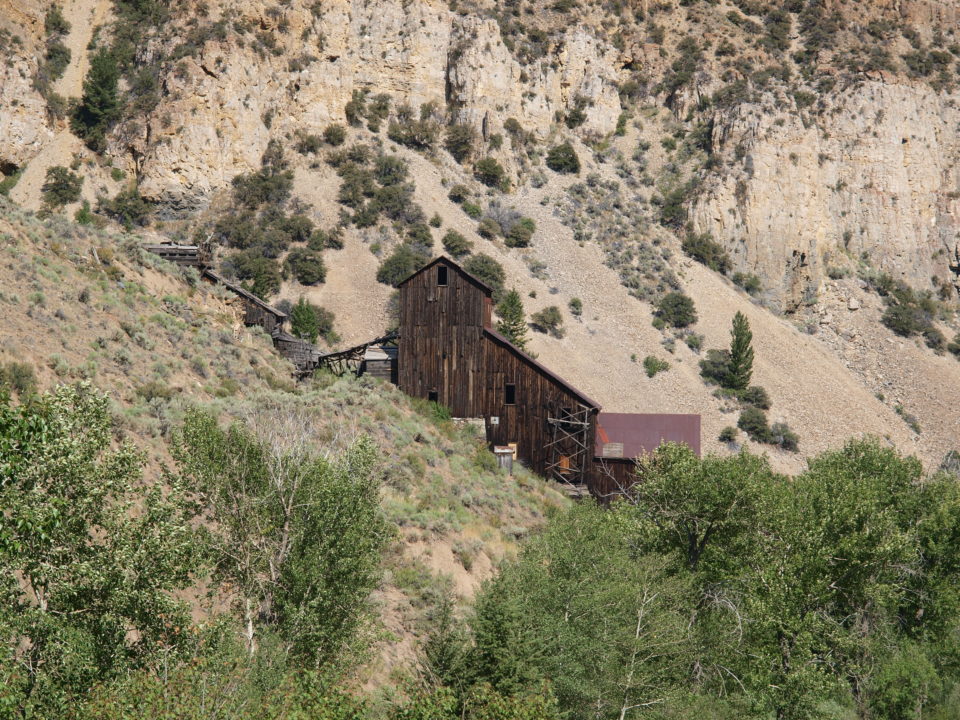At the Stanley Museum, the museum crew doesn’t just talk to visitors about the exhibits in the museum. We talk to them about everything ranging from their family stories, to their hometowns, to their vacation plans. Many of the museum visitors have never been to Stanley and they want to know about other attractions of the area. Often times, they will ask about other historical sites. While I love the Stanley Museum, I am always excited to recommend other historical places because I believe that small institutions have an obligation to support each other in their respective missions to serve the public.
Below are three top sites, outside of the Stanley Museum, that are worth a visit! Best visitation times are in the summer, usually Memorial Day to Labor Day (weather depending), as the roads are not maintained in the winter and visitor services are closed.
The Yankee Fork Dredge
The Dredge is one of the first places I recommend! The Dredge is up the Yankee Fork of the Salmon River and is about 40 minutes from the Stanley Museum. The Dredge is a massive piece of gold mining equipment that was in operation from 1940 to 1952. The Dredge is the size of a building and you can tour the entire machine. Along the tour, you meet with informative and engaging guides who tell visitors about how everything worked. The guides give detailed descriptions of gold mining, the process of building the dredge, and day to day operations. Not only is the tour really informative, but it is also a lot of fun and good for all ages. (It can be chilly inside the big metal machine, so consider bringing a jacket.)

Yankee Fork Dredge. Photo credit: SIHA staff
The Custer Museum
Just up the road from the Dredge is the Custer Museum. Custer is an old mining town that has been long abandoned, but many of the buildings have been restored and maintained. Most of the remaining buildings were houses of mining families. Visitors can walk through the houses and see old wallpaper, furniture, and artifacts scattered around the one-room cabins. Aside from the houses, there is a saloon and a schoolhouse. The Custer Museum is housed in the one-room schoolhouse. The museum has a lot of exhibits about the town of Custer, the nearby mill and mine, the neighboring town of Bonanza, and the Chinese part of town that was pushed away from the downtown. The general store is sometimes staffed with volunteers and offers fun little gifts and guides to browse or buy. And, if you have a high clearance vehicle, you can drive down the old toll road that ran from Custer to Challis. Custer is one of the best-maintained ghost towns in the state and the museum is well worth a visit!

One of the historic buildings in Custer ghost town. Photo credit: SIHA staff
Bayhorse
Bayhorse is another ghost town located just a bit south of Challis. This ghost town is much closer to Challis than Stanley, but it is an easy drive up highway 75! The town of Bayhorse was another mining town like Custer, however, the buildings in Bayhorse have not been as well maintained as the Custer houses. Visitors can’t tour the buildings, but the main street is walkable! Walking around downtown makes one feel like they are in a Western movie! My personal favorite building is the old hotel that stands tall among the other little shacks. The other neat element of the town is the old mill and the charcoal kilns. Best of all, when you are done with your history walk, you can go on the many trails and Jeep roads that surround the area!
This list only gives a glance at all of the historical sites in the Sawtooth and Salmon River Country! You could spend years exploring all the ghost towns and little museums in this area. And never hesitate to ask the sites’ volunteers and docents for their recommendations! We are always happy to help our visitors in their quest for new knowledge.

Bayhorse historic ghost town. Photo credit: SIHA staff
This list only gives a glance at some of the historical sites in the Sawtooth and Salmon River Country! You could spend years exploring all the ghost towns and little museums in this area. And never hesitate to ask the sites’ volunteers and docents for their recommendations! We are always happy to help our visitors in their quest for new knowledge of old stories.
This blog was originally written by Megan Nelson, SIHA’s 2023 Museum Docent, edited and updated April 2025 by Alicia Lindbom, Programs Coordinator.